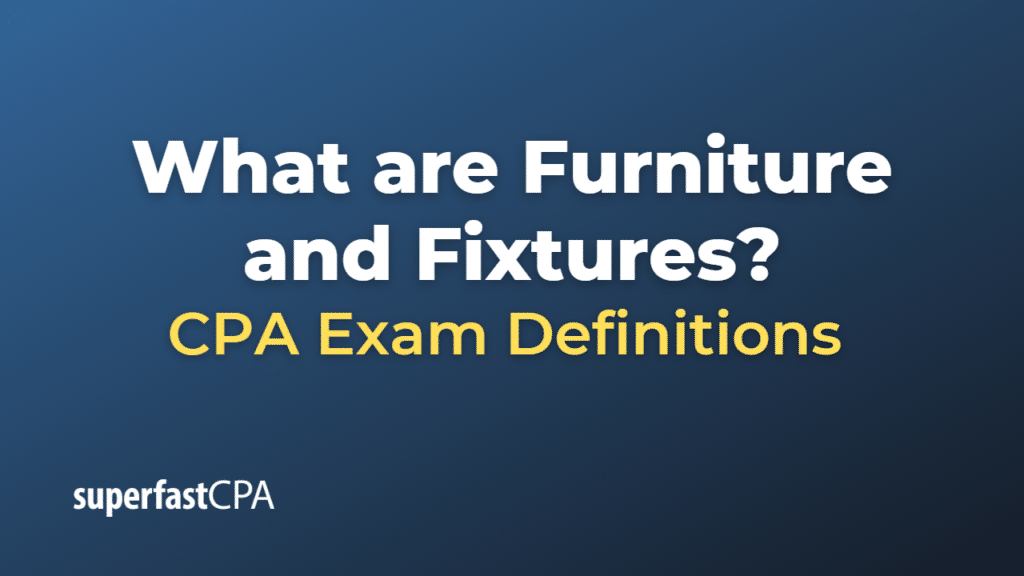Furniture and Fixtures
Furniture and fixtures are long-term assets that a company uses in its business operations. They are tangible assets that are expected to be used for more than one year.
Furniture refers to movable equipment (not fixed to the building) that helps in carrying out business activities. This includes desks, chairs, tables, filing cabinets, bookshelves, etc.
Fixtures, on the other hand, refer to items that are affixed or attached to real property in such a way that they are considered part of the building or land, and they are used in the operation of the business. Examples can include lighting fixtures, plumbing fixtures, or display cases in a retail store.
In accounting terms, both furniture and fixtures are typically capitalized and depreciated over their useful life. The cost of these assets is allocated over the years they are expected to be used. This is done through a process called depreciation, which involves deducting a portion of the asset’s cost each year of its useful life. The accumulated depreciation is then subtracted from the original cost to get the book value of the assets.
These assets fall under the category of Property, Plant, and Equipment (PP&E) on the balance sheet. Companies invest in furniture and fixtures to support their operations and help generate revenues.
Example of Furniture and Fixtures
A restaurant purchases new dining tables, chairs, and kitchen fixtures such as ovens, stoves, and dishwashers.
- Dining tables and chairs: These fall under the category of furniture. They are movable and are used to provide a comfortable dining experience for customers, which is essential to the restaurant’s operations.
- Ovens, stoves, and dishwashers: These are fixtures. They are fixed equipment necessary for preparing food and maintaining cleanliness. They also play a crucial role in the restaurant’s operations.
Now, let’s say the total cost of the new tables, chairs, ovens, stoves, and dishwashers is $100,000, and their expected useful life is 10 years.
In accounting terms, the restaurant would not record the entire $100,000 as an expense in the first year. Instead, it would capitalize the cost and depreciate it over the useful life of the assets. Using straight-line depreciation, the restaurant would record a depreciation expense of $10,000 each year for 10 years ($100,000 cost / 10 years).
In the balance sheet, these assets will be categorized under the heading of Property, Plant, and Equipment (PP&E). Initially, the book value of these assets will be $100,000. After one year, the accumulated depreciation would be $10,000, so the book value would be $90,000 ($100,000 original cost – $10,000 accumulated depreciation). The process continues each year until the end of the useful life of the assets.
This way, the cost of the assets is spread out over the years they are expected to be used, aligning the expenses with the revenue they help generate.













